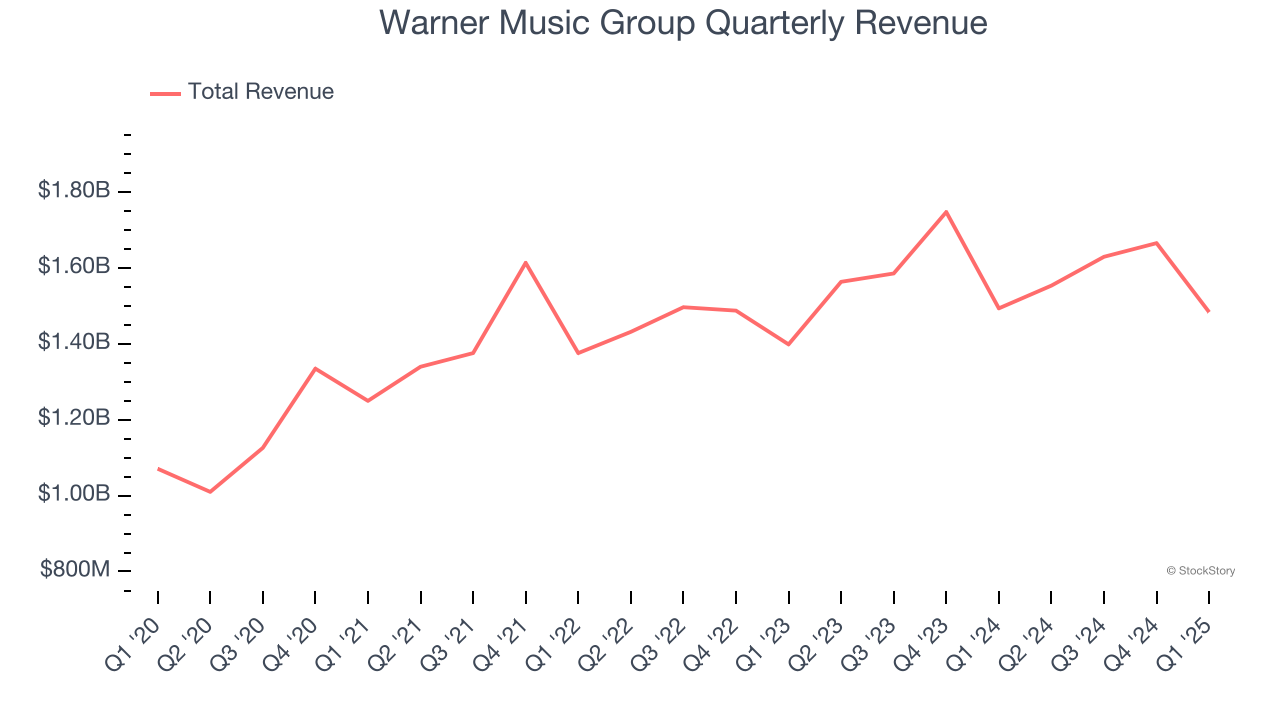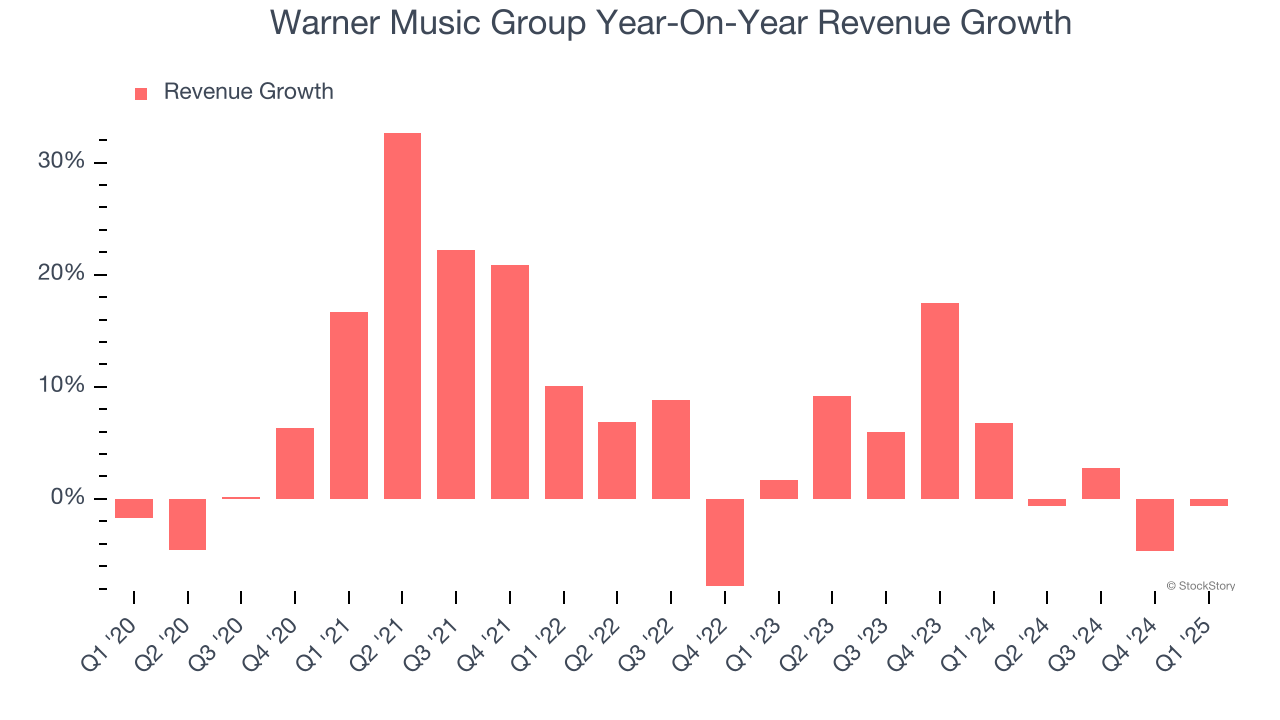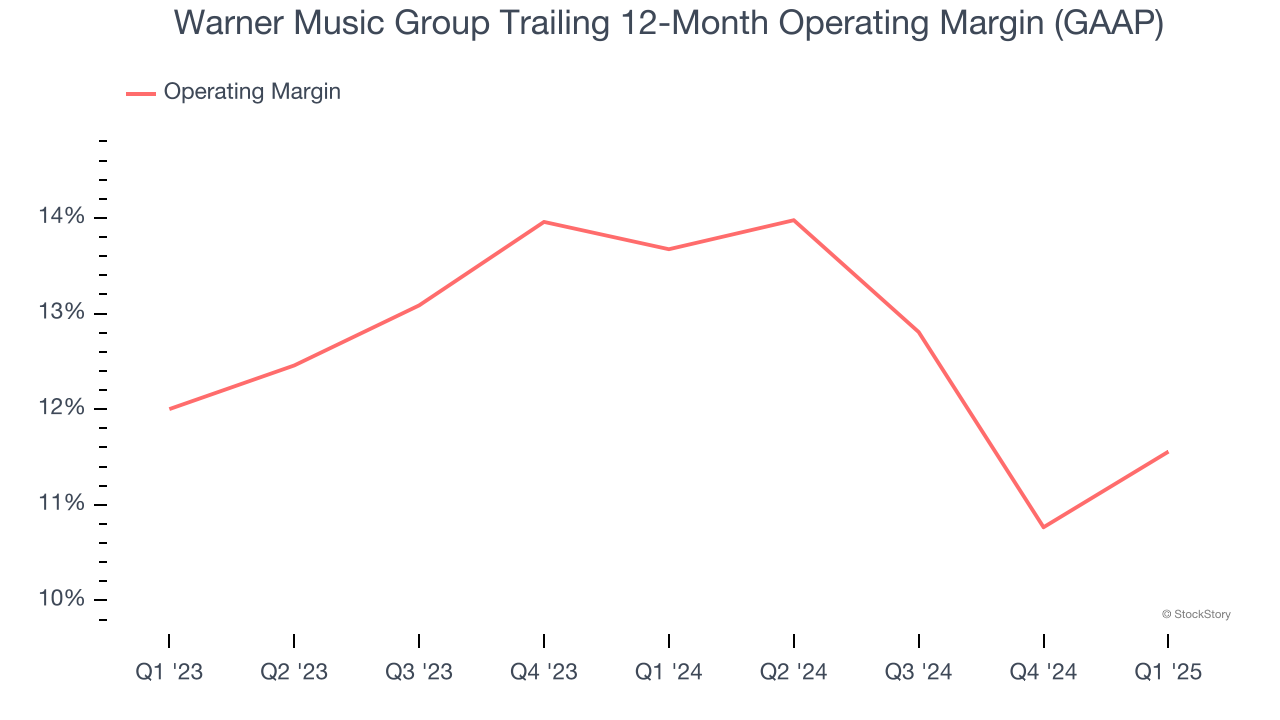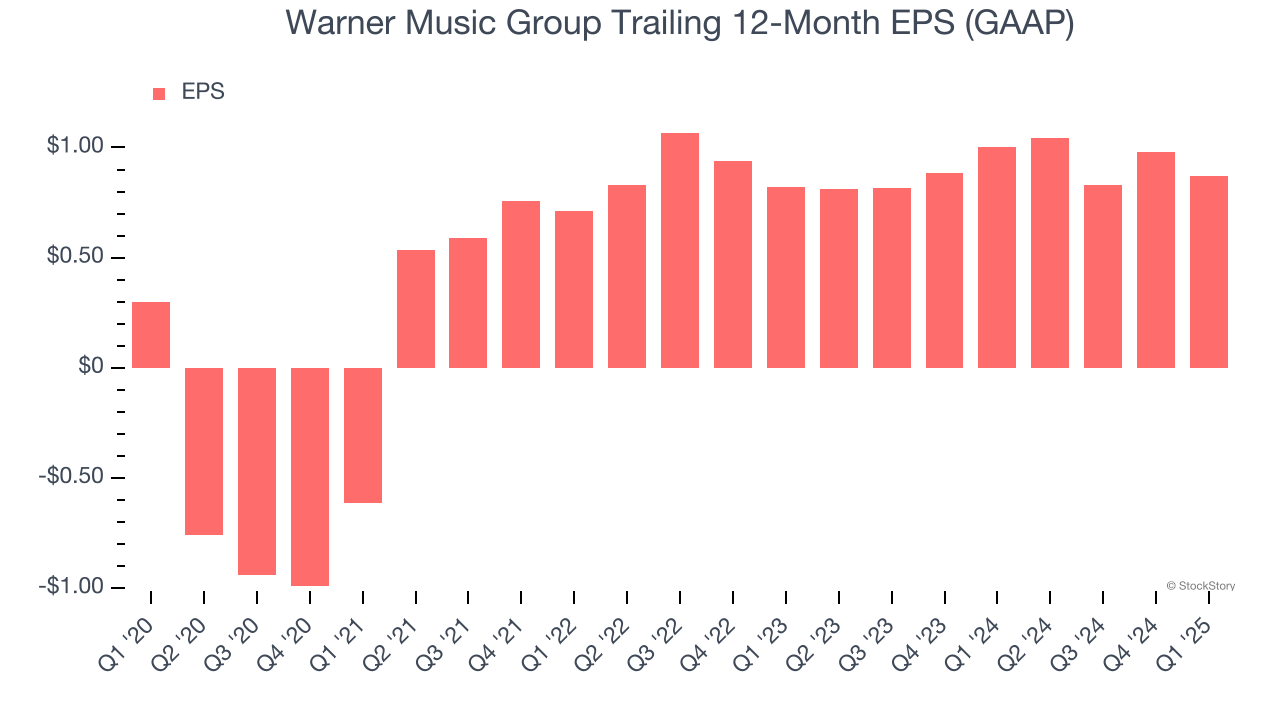
Global music entertainment company Warner Music Group (NASDAQ: WMG) fell short of the market’s revenue expectations in Q1 CY2025, with sales flat year on year at $1.48 billion. Its GAAP profit of $0.07 per share was 74% below analysts’ consensus estimates.
Is now the time to buy Warner Music Group? Find out by accessing our full research report, it’s free.
Warner Music Group (WMG) Q1 CY2025 Highlights:
- Revenue: $1.48 billion vs analyst estimates of $1.52 billion (flat year on year, 2.2% miss)
- EPS (GAAP): $0.07 vs analyst expectations of $0.27 (74% miss)
- Adjusted EBITDA: $303 million vs analyst estimates of $334.9 million (20.4% margin, 9.5% miss)
- Operating Margin: 11.3%, up from 8% in the same quarter last year
- Free Cash Flow was $33 million, up from -$57 million in the same quarter last year
- Market Capitalization: $15.66 billion
Company Overview
Launching the careers of legendary artists like Frank Sinatra, Warner Music Group (NASDAQ: WMG) is a music company managing a diverse portfolio of artists, recordings, and music publishing services worldwide.
Sales Growth
A company’s long-term performance is an indicator of its overall quality. Any business can have short-term success, but a top-tier one grows for years. Unfortunately, Warner Music Group’s 7% annualized revenue growth over the last five years was sluggish. This was below our standard for the consumer discretionary sector and is a poor baseline for our analysis.

Long-term growth is the most important, but within consumer discretionary, product cycles are short and revenue can be hit-driven due to rapidly changing trends and consumer preferences. Warner Music Group’s recent performance shows its demand has slowed as its annualized revenue growth of 4.4% over the last two years was below its five-year trend. 
We can better understand the company’s revenue dynamics by analyzing its most important segments, Recorded Music and Music Publishing, which are 79.2% and 20.9% of revenue. Over the last two years, Warner Music Group’s Recorded Music revenue (new music production) averaged 3.2% year-on-year growth while its Music Publishing revenue (royalties from catalog music) averaged 11% growth.
This quarter, Warner Music Group missed Wall Street’s estimates and reported a rather uninspiring 0.7% year-on-year revenue decline, generating $1.48 billion of revenue.
Looking ahead, sell-side analysts expect revenue to grow 5.6% over the next 12 months, similar to its two-year rate. Although this projection suggests its newer products and services will catalyze better top-line performance, it is still below the sector average.
Software is eating the world and there is virtually no industry left that has been untouched by it. That drives increasing demand for tools helping software developers do their jobs, whether it be monitoring critical cloud infrastructure, integrating audio and video functionality, or ensuring smooth content streaming. Click here to access a free report on our 3 favorite stocks to play this generational megatrend.
Operating Margin
Operating margin is an important measure of profitability as it shows the portion of revenue left after accounting for all core expenses – everything from the cost of goods sold to advertising and wages. It’s also useful for comparing profitability across companies with different levels of debt and tax rates because it excludes interest and taxes.
Warner Music Group’s operating margin has shrunk over the last 12 months, but it still averaged 12.6% over the last two years, decent for a consumer discretionary business. This shows it generally does a decent job managing its expenses, and we wouldn’t weigh the short-term trend too heavily.

This quarter, Warner Music Group generated an operating profit margin of 11.3%, up 3.4 percentage points year on year. This increase was a welcome development and shows it was more efficient.
Earnings Per Share
We track the long-term change in earnings per share (EPS) for the same reason as long-term revenue growth. Compared to revenue, however, EPS highlights whether a company’s growth is profitable.
Warner Music Group’s EPS grew at a spectacular 23.7% compounded annual growth rate over the last five years, higher than its 7% annualized revenue growth. This tells us the company became more profitable on a per-share basis as it expanded.

In Q1, Warner Music Group reported EPS at $0.07, down from $0.18 in the same quarter last year. This print missed analysts’ estimates, but we care more about long-term EPS growth than short-term movements. Over the next 12 months, Wall Street expects Warner Music Group’s full-year EPS of $0.87 to grow 48%.
Key Takeaways from Warner Music Group’s Q1 Results
We struggled to find many positives in these results. Its EPS missed significantly and its Recorded Music revenue fell short of Wall Street’s estimates. Overall, this quarter could have been better. The stock remained flat at $29.85 immediately following the results.
Warner Music Group’s earnings report left more to be desired. Let’s look forward to see if this quarter has created an opportunity to buy the stock. If you’re making that decision, you should consider the bigger picture of valuation, business qualities, as well as the latest earnings. We cover that in our actionable full research report which you can read here, it’s free.





